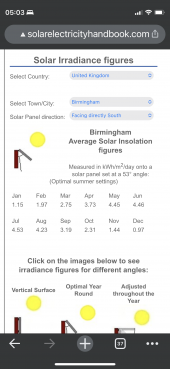I'm assuming that this unit requires standard UK 230V AC at 50Hz? Did I get those specs right? For proper design, you need two numbers, the running wattage, which appears to be ~1000W, and also the starting wattage, called the starting surge, or inrush? That might be in the range of 4X the running wattage. So, first assume you need an inverter that can supply 4000W for at least 1-2 seconds.
A good rule of thumb for power production is to have at least 2X the watts of panels as whatever your biggest single load is. So, for a 1000W air-conditioner, that would be at least 2000W of panels. The good news is that panels are the cheapest component now. Here in California, I can get 2000W for ~ 520$ right now. Look for your local listings on whatever seller's venue you have locally. You'll get the best deals with cash and carry, local pickup. Avoid panel shipments through the mail. That's the single most expensive way to buy panels.
2000W puts you solidly in 24V territory, so shop for a 4000W, 24V sine-wave inverter.
Since this is mostly for daytime use, the battery does not need to be that big. Maybe a golf-cart sized battery in the 250Ah range will work for you. They are typically 6V, so four in series will give you a 24V battery.
So, what you will need....
8 250W grid-tie panels
4 6V golf-cart batteries
1 80A charge controller
1 4000W 24V sine-wave inverter
wires, breakers, Windex, ect...




